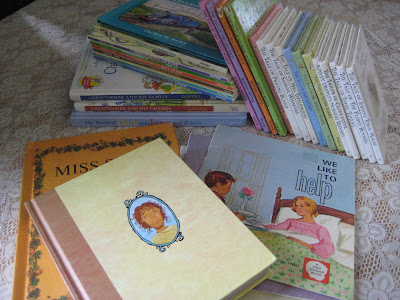Learning
Style vs. Learning Disabilities
I
mentioned in a previous post, how when I was growing up I struggled
with learning, particularly in reading and when someone from outside
my immediate family would learn of this, their answer was always
“That's because you're homeschooled” which was an outright lie
that still infuriates me. Why? Because the people who say that know
little about homeschooling and jump to conclusions.
Please
do not get the idea that I'm mad as I'm typing this. It saddens me
that people have been taught to think education can only happen one
way, and that one way is through the school system. Why do
homeschoolers have to prove to people that it works? It's been
happening for ages actually. Shocked that it hasn't been only in the
last 50 years? Research Thomas Edison's life. His mother taught him
at home. And thanks to him we have the light bulb amongst other
things.
First
off, homeschooling is not the perfect solution. Neither, however, is
the public school system. Both have failed miserably at times for
certain people, in certain ways.
But let
me introduce you to a book on my shelf. It's called “The Way
They Learn” by Cynthia Ulrich Tobias. I've been studying the
book of late, though I haven't read it from cover to cover yet. It's
put out by Focus on the Family, and I would encourage you that if you
have a struggling child, who just isn't doing well in school, to get
a hold of this book, find out what your child's learning style is, or
if it's a disability, and go from there.
And
yes, there is a difference between learning style and learning
disabilities. A Disability can be in the form of dyslexia where words
or letters appear backwards to the reader. Some see no breaks between
words or have the line run off the page. This is not a disease, the
brain works differently for them, but they are still very intelligent
people.
There
are many others, to which I know little to nothing about.
But
here is something I do know from my own experience. Homeschooling is
great for kids with different learning styles, because the school
system does not always cater to their needs. In the home however, you
can change your curriculum to suit your student. (And there is a
growing amount of free resources on the web!)
Learning
styles consist of
Reading
and Writing
They take
notes during lectures or reading
Often
draw or doodle
Do well
with hands on activities
Avid
readers
Able to
translate abstract concepts into words and essays
Visual
Like to
see how things work.
Often
recognize words by sight
Often
remember faces but forget names
Often
have well developed imaginations
Are
easily distracted by movements or action in the room
Find it
easy to learn through descriptions
Can be
unaware of noise
Might
remember pictures better than words
Auditory
Learn
well with verbal instructions
Easy
for them to learn by listening
Remember
names better than faces
Enjoy
dialogue, discussion and plays
Often
work out a problem by talking it through
Love
audio books
Kinesthetic
High
energy levels
Think
and learn best while moving
Often
lose much of what is said
Have
problems concentrating when asked to sit still
Do best
when they can be involved
They
like to do rather than listen or watch.
They
may have a love to find out how things work (taking apart, putting
together.)
Another
way to look at the four learning styles is this way.
Concrete
Sequential (CS)
hardworking
conventional
accurate
stable
dependable
consistent
factual
organized
Concrete
Random (CR)
quick
intuitive
curious
realistic
creative
innovative
instinctive
adventurous
Abstract
Sequential (AS)
analytical
objective
knowledgeable
thorough
structured
logical
deliberate
systematic
Abstract
Random (AR)
sensitive
compassionate
perceptive
imaginative
idealistic
sentimental
spontaneous
flexible
I hope
the above helps you categorize your own learning style, or that of
your child's. And again, I highly recommend that book to help you
further.
I do
not know much about the different learning styles other than my own. So
if your child is a Visual learner, here are some tips that can
help you in teaching a struggling reader.
A
visual learner may struggle with reading in the following ways.
-poor
reading comprehension
-reads
very slowly
-has
trouble sounding out words
-may
substitute for words
Poor
reading comprehension is because, by the time they finish reading
the paragraph or sentence, they put so much effort into getting each
word right, that they lost the content. It's a lot of work to get it
to process through the brain and out the mouth. Reading silently
might be a better solution.
If
they are reading out-loud to you, be sure to do the following.
Have a
bookmark or ruler on hand.
Put
the ruler under the line they are reading, blocking out the rest of
the words below.
This
breaks it down for them so it's not as overwhelming and they can
concentrate on fewer words.
If
they are having trouble sounding out words, try the following.
Using
your finger, cover part of the word, breaking it up (in the proper
place) so they can form the correct sounds and put the word together.
This
may also help them stop substituting words.
Spell
charts! Memorizing! Spelling tests! Word Flashcards!
I
can't emphasize this one enough! Make a chart of the words they
struggle with the most, or are using the most in an essay or story,
and make sure they have that on hand to refer to as needed.
They
need to memorize the spelling of the words they struggle with! This
is where spelling tests and word flashcards can be helpful.
The
computer can be very helpful for Visual learners. Spell check is
a great way to help them learn where they are making mistakes, and
how to correct them by finding the right word, or looking up
definitions so they know if they have the right word, and they learn
more about the words they are struggling with.
Writing!
Visual
learners have good imaginations. They may have tons of stories in
their brain they would love to tell, but because of their learning
style, may have trouble getting it down on paper. However I would
strongly encourage, that if they want to write, do everything
possible to help them reach that goal.
My own
personal story is unique in the sense that I wanted to write so bad,
even though I could hardly read, that I set out to write a story,
(which took 4 years to complete) but in the process of doing so, I
learned to read!
Comic
books!
Now I
know there aren't a lot of good comic books out there. The graphic
world of comic books can be horrific. But I found some oldies on-line
for free. Old western ones can be downloaded off the archive.org site,
and my brother, with the same learning style, loved reading these.
The
reason visual learners love comic books, is for the pictures. There's
more pictures than words. This makes it more fun to read. They don't
get bogged down by long chapters and thick books.
Movies
and audio books
Those with Visual learning probably love movies for obvious reasons.
If they can learn by watching a movie, all the better. And their
vivid imagination will love audio books, especially if they don't
have to read them.
Read, Read, Read!
For someone who is struggling, they may not want to have much to do
with books. In order to keep them interested and wanting to learn, it
is important to read LOTS to them. Find the stories they like, and
read!
And last of all, find a curriculum that works for visual learners.
Look into “Teach Your Child to Read in 100 Easy Lessons”
or the one I think is even better, “Teach your child to read in
20 easy lessons”
These ones are much more visual for them.
I hope this helps some Visual Learner out there! And please remember, encourage, encourage, encourage! They can't get enough praise in the
things they do well!
S.L. Kliever































































